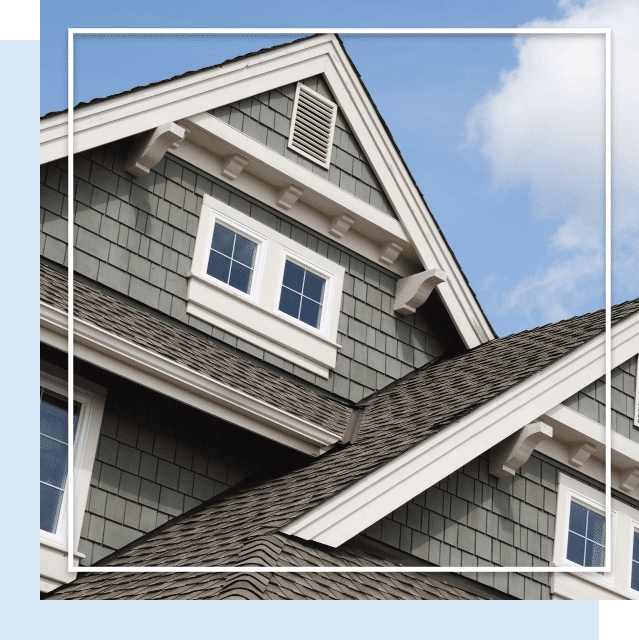Choosing the right exterior material for your home is a significant decision that affects not only the appearance of your property but also its durability, maintenance requirements, and energy efficiency. Among the many options available, vinyl siding is a popular choice, but how does it stack up against other materials like wood, brick, fiber cement, and stucco? In this comprehensive guide, we’ll delve into the pros and cons of each to help you make an informed decision.
Vinyl Siding
Vinyl siding is a synthetic material made from PVC (polyvinyl chloride). It’s a popular choice due to its affordability, versatility, and ease of maintenance. It comes in various colors and styles, making it adaptable to different architectural designs.
Pros:
1. Cost-Effectiveness: Vinyl siding is favored for its affordability. It offers a high return on investment due to its balance of cost, durability, and appearance.
2. Low Maintenance: It requires little to no ongoing maintenance. Unlike wood, it doesn’t need painting or staining and can be cleaned easily with soap and water.
3. Durability: Vinyl is resistant to moisture, rot, and pests like termites. High-quality vinyl can last up to 30 years or more.
4. Variety: Available in a wide array of colors, textures, and profiles, vinyl siding can mimic the look of wood, stone, or slate.
5. Energy Efficiency: With insulated options available, vinyl siding can improve thermal insulation, contributing to energy savings.
Cons:
1. Environmental Concerns: The production of PVC (polyvinyl chloride), the main component of vinyl siding, has environmental implications. However, newer manufacturing processes are becoming more eco-friendly.
2. Aesthetic Limitations: While versatile, it may lack the authentic look of natural materials.
3. Temperature Sensitivity: Extreme temperatures can cause vinyl to crack or warp.
Wood Siding
Wood siding provides a classic and natural look. It’s made from various types of wood, including cedar, pine, and spruce, and can be finished in numerous colors and styles. Wood siding is appreciated for its natural beauty and traditional appeal.
Pros:
1. Aesthetic Appeal: Wood siding offers a timeless, natural beauty that many homeowners appreciate. It’s also highly customizable with paints and stains.
2. Eco-Friendly: Being a natural material, wood is biodegradable and has a smaller environmental footprint when sourced sustainably.
3. Insulation Properties: Wood naturally provides good insulation.
Cons:
1. Maintenance Intensive: Requires regular painting, staining, and sealing to protect against weather elements, insects, and rot.
2. Cost: Higher initial investment and maintenance costs.
3. Vulnerability to Elements: Prone to damage from moisture, insects, and fire.
Brick
Brick siding is a traditional and durable option, made from fired clay. It’s known for its longevity, strength, and classic beauty. Brick provides a timeless look that’s been a staple in construction for centuries.
Pros:
1. Longevity: Brick can last for decades, often as long as the building itself.
2. Minimal Maintenance: Apart from occasional cleaning, brick requires little upkeep and doesn’t need to be painted.
3. Fire and Weather Resistance: Brick is non-combustible and stands up well to adverse weather conditions.
Cons:
1. Higher Cost: The material and installation costs are generally higher than vinyl siding.
2. Weight: Brick is heavy, requiring a strong foundation and support.
3. Installation Complexity: Requires skilled labor for proper installation.
Fiber Cement
Brick siding is a traditional and durable option, made from fired clay. It’s known for its longevity, strength, and classic beauty. Brick provides a timeless look that’s been a staple in construction for centuries.
Pros:
1. Versatility: It can be designed to mimic wood, brick, or stone.
2. Durability: Resistant to termites, rot, and fire. It can withstand harsh weather conditions.
3. Longevity: With proper maintenance, fiber cement siding can last 50 years or more.
Cons:
1. Costlier than Vinyl: More expensive both in terms of materials and installation.
2. Maintenance: May require repainting every 15 to 20 years.
3. Weight: Heavier than vinyl, impacting installation complexity and labor costs.
Stucco
Stucco is a plaster-based siding material, popular in Mediterranean and Spanish architectural styles. It’s applied in layers over a mesh framework, offering a unique textured appearance and good insulation properties.
Pros:
1. Distinctive Look: Offers a unique, Mediterranean or Spanish look.
2. Energy Efficiency: Excellent insulating properties.
3. Fire Resistance: Provides good resistance to fire.
Cons:
1. Prone to Cracking: Can develop cracks with foundation movement or extreme temperature changes.
2. Maintenance: Regular maintenance is needed to repair cracks and prevent moisture intrusion.
3. Regional Suitability: Best suited for arid climates, not ideal in areas with heavy rainfall.
Conclusion
Each material has its distinct advantages and challenges. The choice depends on factors like budget, geographical location, aesthetic preference, and willingness to invest time in maintenance. Vinyl siding stands out for its cost-effectiveness, low maintenance, and versatility, making it an excellent choice for many homeowners.
For those in Connecticut seeking expert advice and installation services, CMW Roofing & Siding offers comprehensive solutions tailored to your needs. Our team of professionals can guide you through selecting the best siding option for your home and ensure a seamless installation process. Contact CMW Roofing & Siding for top-notch vinyl siding services, and give your home the protection and aesthetic appeal it deserves.
